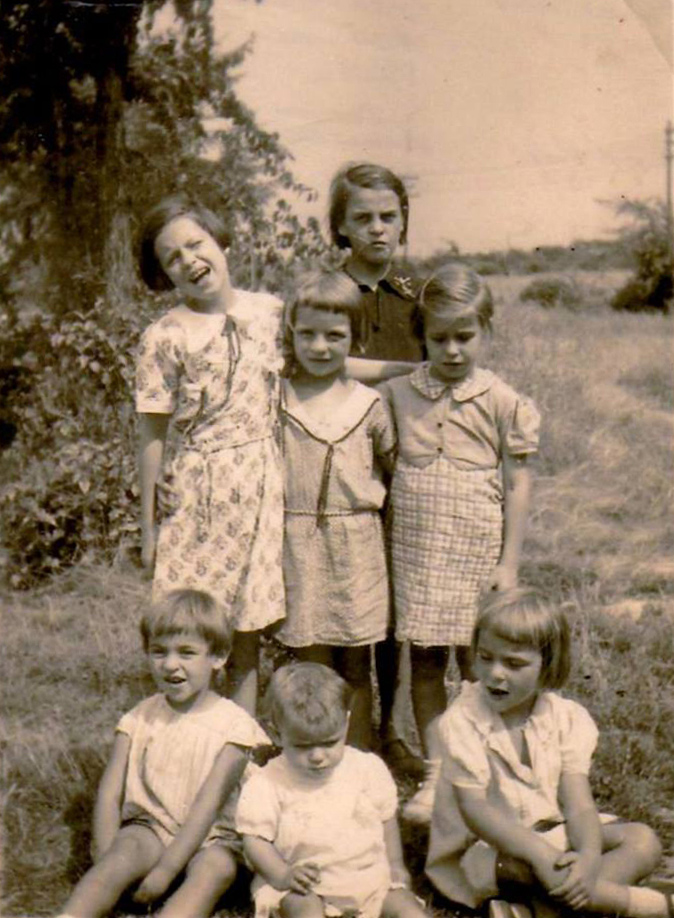By Dave Allston –
A piece of Kitchissippi’s past has slipped away with time, so shocking in its tragedy that it is almost unbelievable. This story has never been written about in any book or blog and has almost been deliberately erased from history. Few who experienced it are still alive, and aside from a few photographs buried in a family album and the depths of the city archives, hardly a trace remains of the Tunney’s Pasture shanty village that existed for 25 years.
In the early 1930s, the north end of Tunney’s along the Ottawa River was far from the scenic parkway and path space it is today. The rocky shoreline led to an uneven sun-dried field covered largely in bush and scratchy sod, a few trees, and muddy creeks. The land sat undeveloped in its natural state. Various ideas for industrial, residential and government use were proposed.
Meanwhile, the Great Depression, WWII, and a housing shortage crisis in Ottawa made hard times even harder for many families. Neighbourhoods like Mechanicsville and Hintonburg already had significant numbers of residents who struggled to get by, even at the best of times. The poorest residents of the community fell victim to homelessness, often out of their own control. A lost job, illness, or a greedy landlord could send a family out on the street and there were very few social services to help.
Families who found themselves out of options began congregating at Tunney’s, constructing makeshift homes with found materials. What began as a short-term summertime solution for the most desperate turned into long-term urban blight, which authorities were unable, or unwilling, to fix.
“Houses” of cardboard, tarpaper, and occasionally framed with wood were built with earthen floors, no electricity, no water, and no sewer. Families with 8-10 children lived in these structures year-round, heated only by a stove in the middle of the room and crudely vented through a wall. Entire families shared one mattress and sometimes kids just slept on the floor. Residents scoured Hintonburg and Wellington Village for anything they could use to improve their home.
[Click images to enlarge. Story follows below.]
Flooding occurred each spring, and fires – always a threat – could incinerate a house in seconds. At its peak in 1952, “Le Port” as it was nicknamed, had 27 families and well over 100 residents, mostly children. An Ottawa Citizen reporter noted it was “like a visit to another world. A rather unpleasant sort of world” he wrote. “More than a score of tar paper shanties, some of them pretentious and some of them only bits and pieces of cardboard boxes are constructed in this area.”
Many were built by the river, others in thickets amongst the shrubs to be hidden from view. Sympathetic neighbours in Mechanicsville, some who were barely above poverty themselves, delivered food, clothes, and water when they could. Shockingly, an Ottawa Water Works engineer stepped in when it was discovered that non-taxpaying families of four veterans living in shanties were obtaining eight pails of water each day from nearby houses. Notices were sent to the households ordering them to stop.
Children from Le Port attended local schools and it was known they were very poor. Nuns at the Catholic schools reportedly provided exceptional care and breakfast and lunch.

The Fex and Jodoin families were two of the first to arrive in the 1930s, while the Bourguignons, Landrys, Clermonts and Alberts were residents for more than ten years.
The population increased in the late 1940s as veterans returned to their old neighbourhoods to find little vacancy, or at least nothing affordable, and were thus forced to build shanties.
The village also became a temporary home for transients who rode freight trains and jumped off approaching the yard at Bayview (often for fear of being caught).
These men joined the village for shelter and roamed Mechanicsville looking for food or money.
Only one disastrous fire occurred during the lifespan of Le Port. In December 1952, a flash fire tore through a 10’x14’ one-room shack occupied by Fred and Annette Boyer. Their two-year-old daughter Linda didn’t make it out alive.
Over the years, authorities attempted unsuccessfully to have the squatters removed. There simply was nowhere else for them to go. By 1951, the FDC (now NCC) began charging families $10/month to live on the land but residents banded together and refused to pay. The shanties remained in place through the early construction of the government buildings.
By the mid-1950s, the Parkway was coming, and the FDC removed the villagers, noting on one eviction notice that “the shack spoils the view from the Champlain Bridge.” Rental housing and social services had improved enough to ease the transition, though for a family like Mathias Bourguignon’s – who lived in a shack for 15 years and saw the birth of four of his eleven children here – it certainly would have been a difficult adjustment.
Living year round in Le Port was about as difficult an existence as one could imagine. Yet, in most of the photos that survive, the residents still appear smiling and happy. “I guess they were happy,” noted descendant Carole Fex-Webster. “They had never really known any different. I think they were good people and very religious.” A true triumph of the spirit in a harsh era that so many years later is almost incomprehensible.
Dave Allston is a local historian and the author of The Kitchissippi Museum. His family has lived in Kitchissippi for six generations. Do you have early memories or photos to share? Send your email to stories@kitchissippi.com.